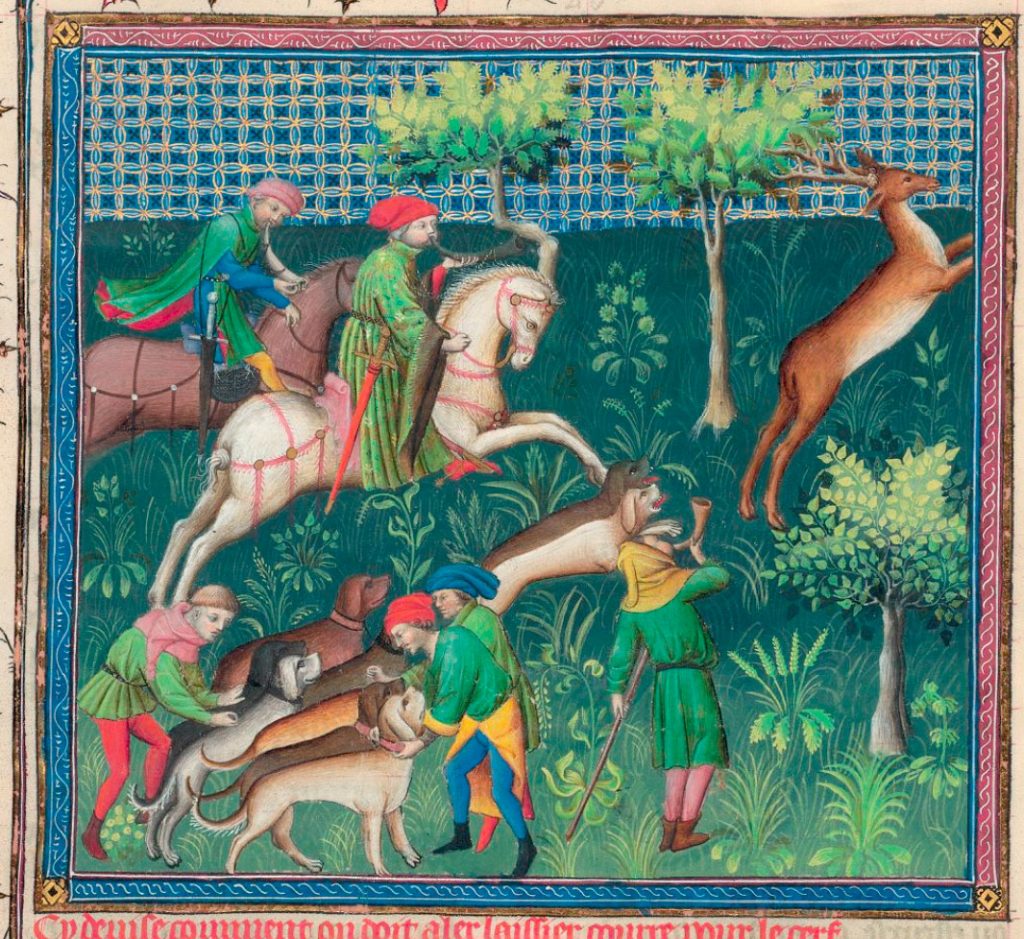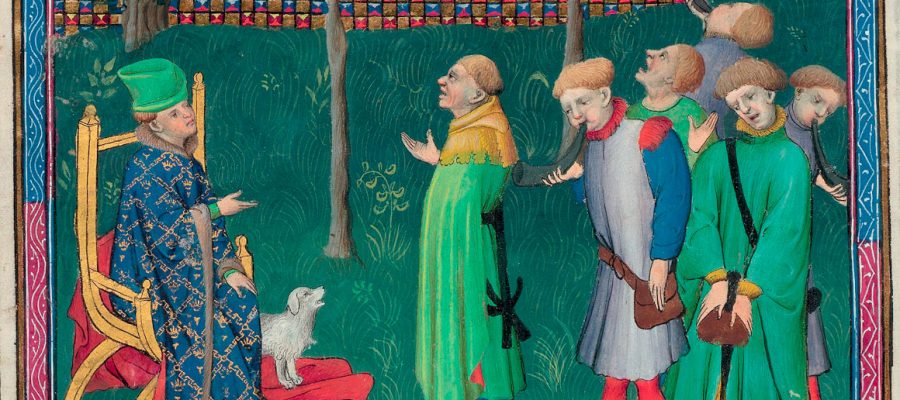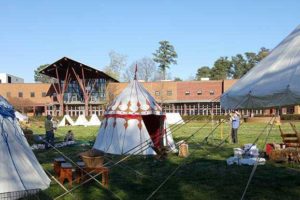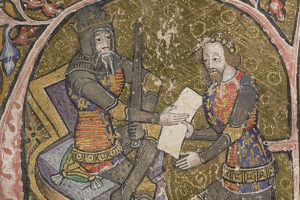In medieval living history as an educational medium, the visual distinction between social classes is a very valuable teaching tool. It easily conveys a message to a lay public who may otherwise not know anything about the social strata of medieval society. One of the most visually obvious ways to portray status in one’s kit is to upgrade the textiles that are worn with it. A person of wealth would show this by wearing clothes befitting their station. This can apply to civilian dress or military equipment. Silk or wool brocades, damasks and embroidered fabrics are some of the most luxurious textiles one can wear and they ooze ‘high status’ when worn as a fine gown, a doublet, an accessory, or a jupon, but a pretty pattern alone does not make something medieval.

The noble hunter is easily distinguished from the huntsmen by his clothing
One of the common beginner traps one can fall into when selecting a brocade (or other patterned fabric) is to stop at the fact that it is a brocade and not consider the actual pattern itself. Just because something has an interesting floral pattern or looks sufficiently ‘old timey’ to our modern eye, it does not mean it’s a medieval pattern. This is very much in the same vein as the video I made about The Importance of Capturing a Medieval Aesthetic. When I first started, I didn’t know a medieval pattern from a modern or renaissance pattern. If it looked old and fancy, it must be appropriate, right? I thought so! Even with years of experience now, textiles are not my primary interest, so I still can’t just look at a pattern and know if it’s appropriately medieval. I usually need to consult with someone who does focus on textiles and then verify the sources for my own edification, and that’s ok and perfectly normal! No one person can be expected to know everything about every facet of medieval material culture. It’s important though, to distinguish between good source material and a product description on a retail website that sells fabric or reproduction clothing. It’s not at all uncommon for places that supply reenactment garments to use patterned fabrics that are very much modern patterns or based on periods that are post-Medieval. I don’t think this is because they’re trying to pull a fast one on people, but it’s mostly because a lot of the reenactment market is perfectly content to use medieval-ish textiles for their purposes… but… if you’re interested in a more rigorous approach to medieval living history (and yes, I recognize that this is not everyone’s goal, and I hate that I always have to remind people that this isn’t a judgement on those who aren’t interested in that level of accuracy /rant), make sure that you’re researching the actual pattern that’s on that fabric you’re about to buy.

Don’t be the heartbroken reeenactor who spent an arm and a leg on a fancy textile and invested dozens of hours sewing only to find out you’ve made a very nice medieval doublet out of a very nice reproduction 17th century silk damask. Some retailers and suppliers are very good about providing specific sources for their patterns (Sartor is particularly good about this with their historical silk brocades), others are a little more vague in their descriptions while some give no sources at all. Don’t feel bad to ask for a source, or to verify one! It’s definitely worth the extra research time to avoid ending up with a garment you can’t use!






2 Comments
Leave your reply.